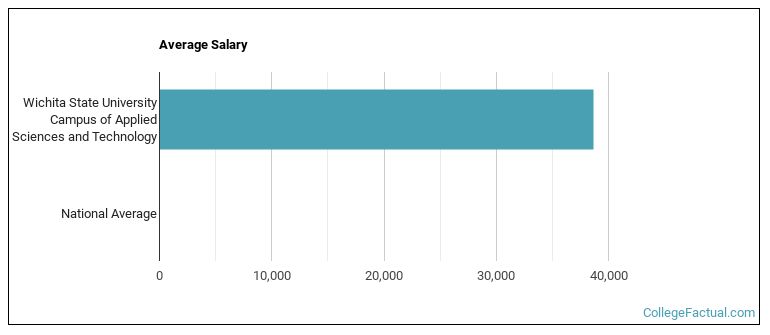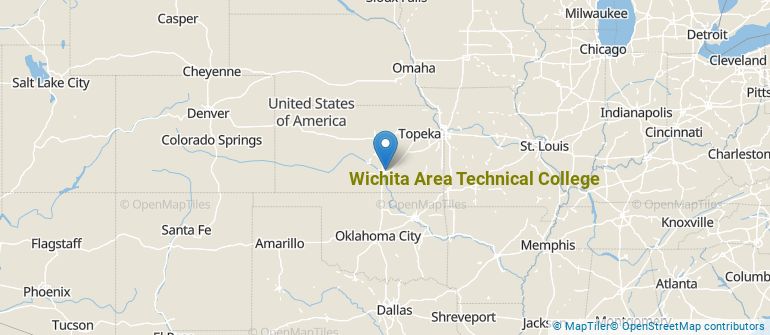 by our College Data Analytics Team
by our College Data Analytics Team
College Factual recognizes the best colleges and universities in its annual rankings. These rankings include categories for best overall colleges, best colleges for each major, best value schools, and much more.
Wichita State University Campus of Applied Sciences and Technology was awarded 11 badges in the 2025 rankings. The highest ranked major at the school is welding technology/welder.
Explore the best ranked schools for the programs you are most interested in.
College Factual ranked WSU Tech as #279 out of 2,152 colleges and universities in the country on its 2025 Best Colleges list. This puts it in the top 20% of all schools in the nation. This is an improvement over the previous year, when WSU Tech held the #440 spot on the Best Overall Colleges list.
WSU Tech is also ranked #3 out of 44 schools in Kansas.
See all of the rankings for Wichita State University Campus of Applied Sciences and Technology.
Since Wichita State University Campus of Applied Sciences and Technology has an open admissions policy, being accepted to the school isn't that hard. However, a full basic things - such as a high school diploma or equivalent - may be required. Also, go over your application to make sure it is complete before you submit it.
The student to faculty ratio at Wichita State University Campus of Applied Sciences and Technology is about average at 16 to 1. This ratio is often used to gauge how many students might be in an average class and how much time professors will have to spend with their students on an individual level. The national average for this metric is 15 to 1.
In addition to the student to faculty ratio, some people look at what percentage of faculty members are full-time as a sign of how much time professors will be able to spend with their students. This is because part-time teachers may not be be on campus as much as their full-time counterparts.
The full-time faculty percentage at Wichita State University Campus of Applied Sciences and Technology is 25%. This is lower than the national average of 47%.
The freshmen retention rate is a sign of how many full-time students like a college or university well enough to come back for their sophomore year. At Wichita State University Campus of Applied Sciences and Technology this rate is 57%, which is a bit lower than the national average of 68%.
During the 2017-2018 academic year, there were 4,606 undergraduates at WSU Tech with 1,499 being full-time and 3,107 being part-time.
| $0-30 K | $30K-48K | $48-75 | $75-110K | $110K + |
|---|---|---|---|---|
| $7,083 | $8,331 | $10,909 | $14,411 | $13,708 |
The net price is calculated by adding tuition, room, board and other costs and subtracting financial aid.Note that the net price is typically less than the published for a school. For more information on the sticker price of WSU Tech, see our tuition and fees and room and board pages.
Almost 66% of college students who graduated with the class of 2018 took out student loans, but that percentage varies from school to school. At WSU Tech, approximately 39% of students took out student loans averaging $5,550 a year. That adds up to $22,200 over four years for those students.


Contact details for WSU Tech are given below.
| Contact Details | |
|---|---|
| Address: | 4004 N Webb Rd. Bldg 100, Wichita, KS 67226 |
| Phone: | 316-677-9400 |
| Website: | www.wsutech.edu/ |
| Most Popular Majors | Bachelor’s Degrees | Average Salary of Graduates |
|---|---|---|
| Practical Nursing & Nursing Assistants | 478 | NA |
| Vehicle Maintenance & Repair | 410 | NA |
| Precision Metal Working | 208 | NA |
| Health Aids/Attendants/Orderlies | 158 | NA |
| Nuclear & Radiological Technicians | 108 | NA |
| Drafting & Design Engineering Technology | 98 | NA |
| Information Technology | 62 | NA |
| Heating, Air Conditioning, Ventilation & Refrigeration | 44 | NA |
| Allied Health Professions | 36 | NA |
| Mechanical Engineering Technology | 30 | NA |
Online learning options are becoming more and more popular at American colleges and universities. Online classes are great for students who have busy schedules or for those who just want to study on their own time.
In 2022-2023, 1,712 students took at least one online class at Wichita State University Campus of Applied Sciences and Technology. This is a decrease from the 1,783 students who took online classes the previous year.
| Year | Took at Least One Online Class | Took All Classes Online |
|---|---|---|
| 2022-2023 | 1,712 | 656 |
| 2021-2022 | 1,783 | 680 |
| 2020-2021 | 2,189 | 923 |
| 2018-2019 | 1,796 | 589 |
Footnotes
*The racial-ethnic minorities count is calculated by taking the total number of students and subtracting white students, international students, and students whose race/ethnicity was unknown. This number is then divided by the total number of students at the school to obtain the racial-ethnic minorities percentage.
References
More about our data sources and methodologies.